This is the second installment from The Ecology of Care: Medicine, Agriculture, Money, and the Quiet Power of Human and Microbial Communities. You can find the first installment here. I decided to offer these to my Substack readers as the book seems more relevant than ever, and I’m about to start teaching a course on the topic. I’m also recording some late-night audio for this chapter—stumbles and all.
CHAPTER ONE: The Lobotomy of Care
More and more, patients arrive at my doorstep talking about a deep, almost indescribable sense of disconnection. Computer programmers, mothers, bank tellers, factory workers, even artists . . . they all have an uncomfortable sense of separateness. It’s as if they had become untethered from the Earth without meaning to, like accidental astronauts: blasted out of the atmosphere by human ingenuity, and suddenly they look around them and want to go home.
“It’s as if there is an entire world I’ve been exiled from. I want to return, but I don’t remember it, so how can I describe it?” said a man I sat with yesterday, who yearned to reconnect to some other way of learning that he had lost while being taught to sit still, indoors, in elementary school.
Some speak of it as an intense desire to reconnect to nature, not just to go camping or learn the names of plants, but to somehow undo the boundaries of buildings and clothes. Others feel the pull of a place their family left behind, or a pull to the indigenous culture embodied in the terrain where they now live. They miss those complex bonds that strengthen from generation to generation through shared food, hard work, and wild play.
Some people are so disconnected that a single person, or even a small dog, paying attention to them feels like a miracle. Disconnection, I am convinced, is at the heart of illness.
After more than twenty years of listening to patients, I’ve noticed that healing often starts with a desire to reenter the wholes we are born to be part of: landscapes, family and community, and the “is-ness” of life itself.
As a health-care provider—someone to whom people come for both “health” and “care”—I often have the honor of being the first link. As I sit with patients, I listen for the places where I can help them reconnect, whether that means giving them an age-old recipe for bone broth, helping them develop a spiritual practice, or taking them for a walk in the woods with my dog while we talk about widening their support system.
I am constantly aware, however, that this feeling of disconnection that people suffer from is profoundly intertwined with the history and culture of modern medicine and science—and that my own family of origin played a part in that history.
The Brain Surgeon
When I was fifteen, I went to work for my grandfather for a summer, hoping to do what my mother and her two brothers had done. When they were teenagers they assisted him in his surgeries, handing him instruments as he cut into the delicate tissues of the brain and the vulnerable structures of the spine. My grandfather had wanted to be a car mechanic but his father, a lawyer, insisted he take on a profession. So he became, instead, a neurosurgeon at Hartford Hospital and a professor of medicine at Yale. His name was William Beecher Scoville.
Many of the walls in his Frank Lloyd Wright–style house were made of glass from ceiling to floor. They looked out over well tended gardens and a clear blue swimming pool shaped like a broken rectangle, where my grandfather and his new, young French wife swam naked. Large modern paintings graced the walls, and sleek Scandinavian furniture punctuated the open rooms. As children, my brother and I bicycled up and down the hallways with our aunt and uncle (who were younger than we were). We slid down the staircase on pillows into the huge clean basement, where we played hide-and-seek, snuck gold-wrapped chocolates out of the cupboards, and fell asleep, smelling of chlorine and French perfume, under soft llama-fur throws.
The rules never changed: no gum chewing, and no eating at restaurants. My grandfather’s wife, Hélène, served Boston lettuce salad and Dijon vinaigrette every time she roasted a chicken to perfection, and brought my handsome grandfather the same breakfast each morning before work: a boiled egg in an egg cup, a piece of toast, and a small glass of orange juice. He sat and ate it, alone like a king, at the head of the large oval dining room table, while the rest of us sat in the kitchen. The only thing that changed from year to year were the beautiful au pair girls; a new one arrived each year from France.
The summer I worked for my grandfather, he left the Rolls Royce in the garage because it was too slow to get to work in, and drove to the hospital each morning in his Mercedes Benz. He was known for driving fast—very fast—and that’s what we did on those mornings: 95, 100, 110, even 120 mph. I slid down in the leather seat, closed my eyes, and prayed not to crash as we passed rusty station wagons that looked like the ones my parents drove. But we didn’t crash. We threaded our way nimbly through the wealthy suburb onto the highway, past the large corporate headquarters of the insurance agencies whose wealth had built this place, and into the inner city of Hartford, Connecticut.
He gave me a white coat, to differentiate me from the patients, and turned me over to his Scottish secretary, Betty, for training. That summer, I sat in on cases, filed notes, showed patients to their examination rooms, and delivered folders around the hospital, but I never got to help him in his surgeries. That’s probably because one particular surgery of his had changed medical history with a flick of a scalpel, and from then on, the world was watching him.
In 1953 (around the time that my mother was handing him his tools), he purposefully removed a portion of the hippocampus from the brain of a young man known as “H.M.” in the medical literature, who suffered from nearly constant seizures. The surgery cured the seizures, as my grandfather had hoped it would, but left the patient unable to store new memories. H.M.’s case, followed for the next fifty-five years by researchers at MIT and McGill, laid the groundwork for our current understanding of how memory works in the brain.
Memory is complex. My own memories have percolated down through generations, have been infused with stories from friends and patients, and have been flavored by information from books, newspapers, and the Internet.
There are other influences on my memory that are larger than the human stories—or smaller, as the case may be.
When I signal my dog with a tiny movement of my eyes to come sit with me while I listen to a patient, somewhere in our cells we are remembering every generation of our human and canine ancestries that evolved to communicate with each other while working so that both of us could eat and survive.
When after a long day of work, I jump back into the river one more time, I bathe in the biochemistry of all the other creatures that have lived and swum in the river. I walk back home through a mist of fragrant molecules emitted by the trees that have been here for hundreds of years before me, and the mushrooms that just sprang up while I was sleeping the night before. All these molecules in the air and water interact with my own biochemistry as I move through the landscape.1
When I eat a carrot pulled fresh from the garden, even when I kiss someone, I am ingesting the modern descendants of ancient strains of beneficial bacteria and yeasts that have their own cellular memory. As they populate my inner ecosystem, they influence my development, health, mood, and behavior—and likely my memories as well.2 All of these animals, plants, fungi, yeasts, and bacteria are constantly shifting and changing their chemistry, behavior, and DNA in order to evolve along with each other, and with us, in sickness and in health, like some huge complex vow of love unfolding since the beginning of time.
Lobotomies and Loss of Soul
One of my grandfather’s specialties was the lobotomy. He helped to popularize lobotomies in the 1940s and ’50s as a way to relieve symptoms of depression, schizophrenia, and other so-called mental illnesses related to an “excess of emotion.” The procedure—so simple that it could be done outside of an operating room—achieved its effect, according to one psychiatrist, by “reducing the complexity of psychic life.”3
With a quick maneuver, my grandfather sliced the rational frontal lobe free from its web of connections to the deeper, instinctual parts of the brain that we share with other animals. These brain connections, when intact, give us the ability to know instinctively when something is wrong, to respond quickly to dangerous situations, to orient ourselves within a landscape, to pick up subconscious information through our senses, and to discern emotions through subtle shifts in gesture, tone, and smell.
After my grandfather severed the planning and problem-solving “executive” functioning from these more ancient ways of knowing, patients lost something that was hard to pinpoint but easy to notice—and subtly unnerving: there was a general lack of spontaneity, responsiveness, and self-awareness. A colleague of my grandfather’s said that the best way to describe what was missing in patients who had had lobotomies was the person’s “soul.” (For a detailed—and chilling—account of my grandfather’s work, see my brother Luke Dittrich’s book Patient H.M.)
His surgeries were just one example of parallel attempts going on all around him to control other unpredictable wildnesses: the insects in our fields, the bacteria in our bodies, the behavior of children, and the tricky emotions of intimate relationships, to name just a few.
Although the practice of lobotomies has ended, the “loss of soul” has not. With our modern tendency to favor the frontal lobe activities of reductionist, empirical, linear thinking, we have lost our felt sense of our place within the deeper, complex web of life. We have insulated ourselves from that awareness in our everyday lives.
This “soul”—this bridge between reason and instinct—is the essence of what so many of us feel we are missing. If we could find it, it would help us to bring our ancient senses—of orientation, feeling, and relationship—into the conversation as we examine our high-speed modern lives. It would also help us respond to the challenges we currently face with the appropriate mix of urgency and calm, adaptation and resiliency.
I suspect that while most of us have never suffered a lobotomy, we have been impacted by the same forces that made my grandfather and his colleagues decide, over and over again, that this severing of reason from response was the only recourse: a need to soothe anxieties, reduce variables, and control the wild unpredictability of life and emotions in an era of rapid change.
The Dove Laboratory
On a winter day in 1984, as my grandfather exited the high way, another car slammed into his, killing him instantly. He was seventy-eight years old, still working full time as a brain surgeon. I was in college.
It was the end of an era in our family’s life. There would be no more wild card games around the huge table, no more riding bicycles down the halls, no more caviar or Rolls Royces. No one else could really take his larger-than-life place, and so we simply stopped gathering.
But on some other level, he was truly indestructible. Lying in my dorm room thinking about him after his death, I felt a strange sensation, almost as if something from his life was being poured into mine. I wasn’t sure I wanted it, but he wasn’t that kind of giver.
The sensation reminded me of how I’d felt after a short conversation with him a few months before. He had pulled me aside in private at a holiday gathering, and asked me about my life. It was rare to get private attention from him, but perhaps he had already heard the news that the rest of us didn’t find out about until after the car accident: that he had a rare form of cancer. He pulled out a small box and opened it to reveal a pair of lavish gold and amethyst earrings shaped like upside-down question marks.
“Here,” he said, putting the box in my hands somewhat awkwardly. “This is just between you and me. You have a good mind and I admire what you are doing—studying Chinese and Russian. These were given to me by a patient in South America. I think you are the only one in the family who can handle them.”
The sense in that earlier moment was the same kind of feeling I felt now in my dorm room after his death: it was such a surprise to be given anything by him that I felt compelled to accept. As I pondered my odd inheritance, I wasn’t sure I wanted either of them—the earrings or his inspiration—but I was determined to make them my own.
A few months after my grandfather died, I applied for a work-study job in the neuropsychology laboratory at my college. My job was to take care of hundreds of ring-necked doves, each living an isolated life in its own little metal cage in upper Manhattan. One day, as I was cleaning out cages, the woman who ran the psychology lab invited me to see what the birds were used for.
She had a dove clamped into a small metal box, looking quite confused. The top of the bird’s skull had been removed, without anesthesia, exposing the miniature brain inside. She paused—holding her tiny tools in midair, before she dove in to remove some part of the brain—to explain how this surgery would allow her to observe changes in the bird’s memory and behavior. She must have seen me wince, because she assured me in a cool voice that it didn’t hurt—it couldn’t possibly—because birds don’t have the same relationship to pain as humans do.
It was hard to get the image out of my mind later, as I held the other doves, cleaned their cages, and gave them seeds and water. Here is what I observed: every day I poured a colorful mix of twenty different seed varieties into their feeding boxes, yet each dove had one or two types of seeds that he or she disliked. So, over time, each clear plastic box filled up with a different kind of rejected seed, making a patchwork of natural colors that was visually appealing to me. It was the only variation in the otherwise stark rows of identical cages.
This got me thinking about medical research itself. These doves were considered, for experimental purposes, to be a large group of identical units. But they weren’t. Each dove was different, with individual tastes and preferences, and although the researchers were intending to feed the birds all the same food, in fact they had different diets, by choice.
They were also living entirely non-dove-like lives. Totally absent were such stimuli as flight and navigation, sunlight and moonlight, treetop and meadow, probably leaving those parts of their brains woefully undeveloped. Also absent was any experience of relationship, courtship, or flock behavior. In this entirely artificial and human-made environment, how could the scientists fully understand the changes they were observing?
I shared my thoughts with the woman who ran the lab, but she seemed to have little interest in my perspective. She was working in the reductionist, empirical model of science, trying to understand things by separating them from their natural environment and taking them apart, piece by piece.
I, on the other hand, was thinking about whether I could get away with opening all the cages and windows and letting the doves reunite with the earth- and sky-filled world to which they belonged.
The Radioactive Family
Although I was unaware of it at the time, the animal laboratory I worked in was an offshoot of my great-grandfather’s animal laboratory, which he ran when he was director of the Crocker Institute of Cancer Research and director of the pathology laboratory at Saint Luke’s Hospital from 1910 to 1948.4 He was one generation up, on the other side of the family—my father’s grandfather, Dr. Francis Carter Wood, known to his family as Poppy.
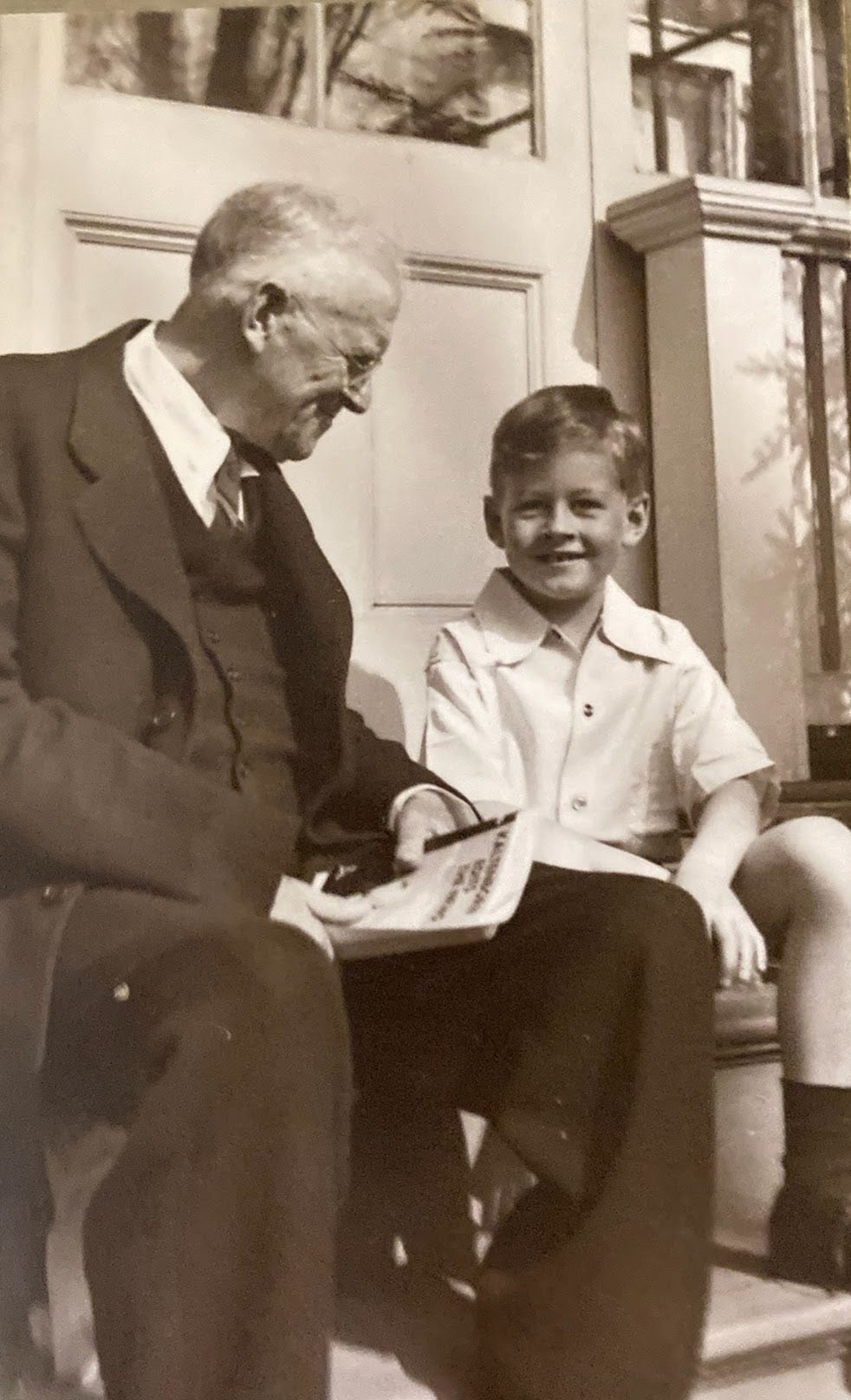
On weekends he experimented with the latest technology—photography—taking pictures of his children sitting in prams with their large bonnets and bows in Central Park, or posing on their summer porch in Claremont, New Hampshire, with their mother in her high-necked Victorian dresses.
The rest of the week he experimented with radiation—X-rays and radium—to diagnose and treat cancer. He and Marie Curie corresponded across the Atlantic, and he helped raise money from women in the United States so Curie could buy radioactive materials for her work. He also pioneered the use of laboratory animals for cancer research. As a professor at Columbia, his daughters got free tuition at Barnard, the women’s college across the street. I followed my grandmother’s footsteps to Barnard, and my great-grandfather’s lab full of rabbits and rats became my lab full of ring-necked doves.
His legacy was passed down in an unusual way: he experimented on a number of our family members, “successfully” treating my grandmother’s acne, my father’s sore throats, and my great-uncle’s warts—with radiation.
Radiation was all the rage in those days. At the World’s Fair, people tried out sitting in radioactive baths as amusement, to feel the fizzy sensations. Shoe salesmen had X-ray machines where you could see the bones of your feet when you stood on them and wiggled your toes. But over the course of my great-grandfather’s lifetime, it became more and more obvious that radiation—while amusing to play with, and therapeutic in some ways—had problematic results. Many of my relatives—including my father and grandmother—suffered side effects from his treatments: thyroid problems, skin cancer, and other afflictions related to the radiation that had changed the DNA of their cells.
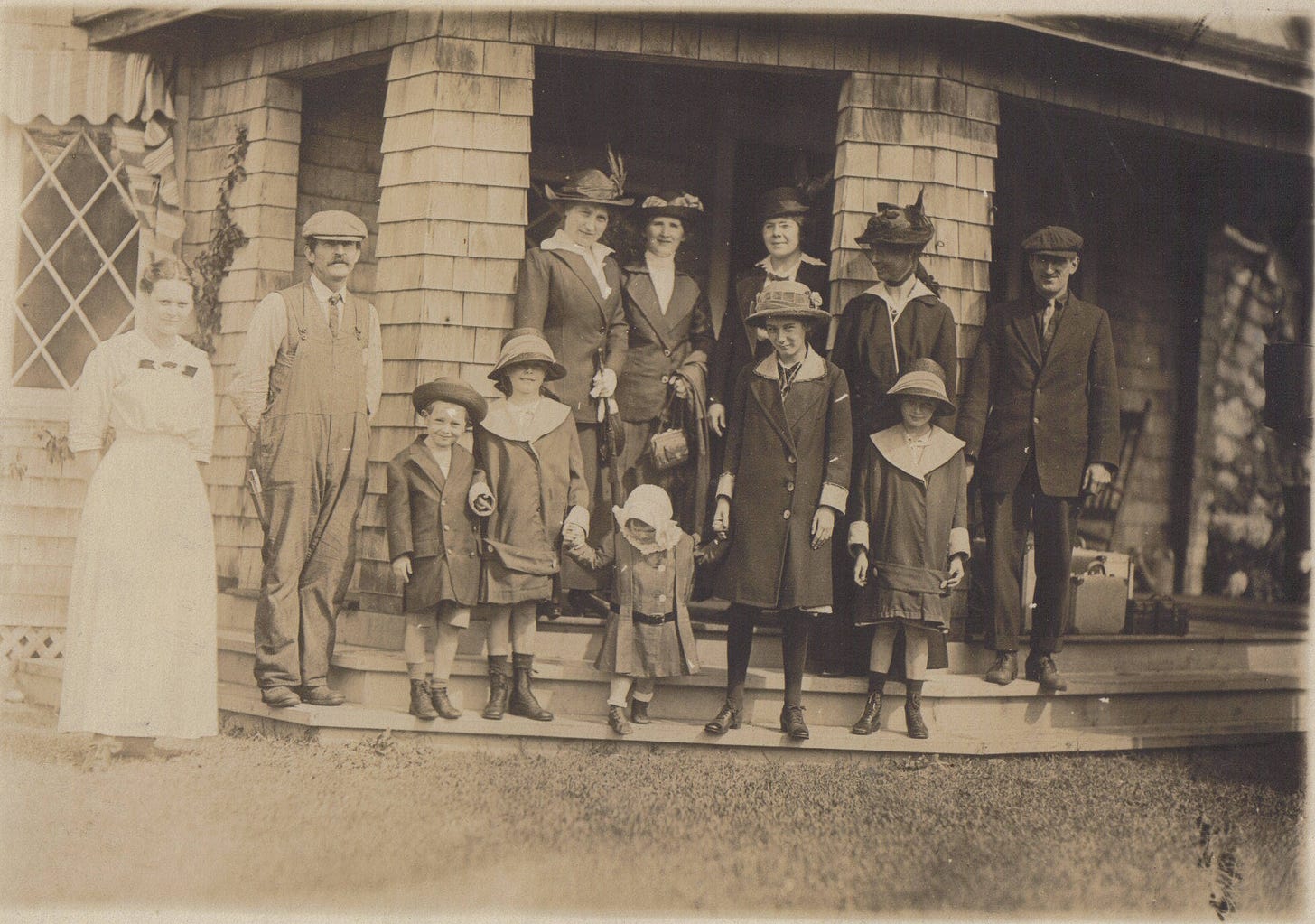
Near the end of the Second World War, scientists from the Manhattan Project called my great-grandfather Wood into a meeting to discuss the likely after effects of dropping an atomic bomb on Japan. My family still remembers him coming home that day, shaking his head in disbelief and discouragement at how his research on radioactivity and cancer—intended to help humanity—was being used for something so destructive.
This was not unusual for the era; science and technology criss-crossed the boundaries of medical, agricultural, and military lines. Rat poisons became blood thinners, pesticides became poison gas, agricultural herbicides were used as defoliants to uncover enemies in military operations, and chemicals left over from the manufacture of bombs became fertilizers for farms and ingredients in toothpaste.
I never was brave enough to let the doves out while I worked in the lab. Yet that unfulfilled urge for a change has worked within me over the years, making me constantly question whether there is something missing in the world of medicine, some other way of knowing that sees individual health as inseparable from the inner and outer landscapes in which we were born. Something the person taking care of the doves could contribute.
A Day at the Clinic: The Farmer and the Acupuncturist
Phoebe barks. My first patient, Ted, is at the door.
He drops off some butter and milk in my refrigerator as he comes in, gives me a hug, and asks me where he should put the potatoes, eggs, and beef he has brought, as well. My assistant, Marisa, and I smile at each other—it’s a rare treat to see Ted, and we look forward to the food he brings. He’s one of those farmers who focuses on quality: breeding heirloom cows from generations of healthy stock, all raised outdoors on pure pasture. I’ve treated his family for years. In a rural town like Thetford, with a population of 2,700, relationships are—by nature—multilayered and complex.
One patient might be a neighbor who plows my driveway and lends me tools. Another might be the owner of my favorite dance hall and the person who carved my salad bowl. Yet another is my best friend’s sister-in-law, the person I buy gas from, and my house cleaner.
Many relationships have shifted and deepened since I first opened my acupuncture practice here more than twenty years ago. Strict, socially “sterile” boundaries between patient and provider are impossible in my practice here, and most of the time that’s the way I like it. It allows me to see patients in the context of their actual lives, and allows them to see me in the context of mine.
Patients call me on my home phone to set up appointments, shovel the snow off my walkway when they see I’m super-busy, and often bring me food from their farms and kitchens. Ted is no exception. He enters the next room and lies down on a treatment table flooded with sunlight, looking out into the understory of a large box-elder tree. Three chickadees, a blue jay, and two doves shift places in a jazzy dance between branches and the ground.
Generally, Ted is in excellent health, only needing an occasional tune-up when he falls off a tractor or works a little too hard. But today he tells me he is healing from a shoulder injury, he has a bit of a fever, and he is trying to get off the sleeping pills he has been using every once in a while since his wife died. As he speaks, I listen not just for information about his symptoms, but also to the tone of his voice, which sounds tired but not exhausted. As he answers me, I notice the lack of sparkle in his eyes.
I feel his pulse, which helps me to pinpoint which parts of his body are holding tension or have poor circulation; whether he is fighting off an acute or chronic infection; as well as how his heart is working. I look at his tongue for odd variations in color, coating, cracks, or shape, which would alert me to deeper changes in his gut flora and interior organs—the beginnings of more serious problems.
My diagnostic tools are not machines; they are my own senses. As I move around his body, I can smell that he is basically healthy, just as I can smell when other patients are not. I can feel from the skin on his forearm and ankles that he is getting enough fats from the grass-fed cream and butter he eats to keep it supple and warm, and from the tone of his muscles that he is getting enough protein. From the way his skin bounces back when pressed, I can feel that his lymphatic system is in good order, which means that he is getting enough exercise and drinking enough fluid.
He starts to relax as he feels my warm hands on his wrists, arms, and feet, and his breathing settles down. I learned to touch and feel my patients from the blind acupuncturists I studied with in Japan (where acupuncture is the traditional profession for the blind), and have combined it with my own knowledge of biomedicine, nutrition, and many years of practice. But the importance of the way I touch patients is deeper than diagnostics.
Modern life deprives us of touch at every turn: from the moment we are put into a crib, to the years we spend alone in nursing homes. One of my blind teachers, Toshio Yanagishita, said to me, “As soon as you touch the patient, the treatment has begun.”
I slip a few hair-thin needles into Ted’s wrists, ankles, and ear, and within minutes he is sound asleep.
Often he comes for a private visit, so we have more time for talking, but today is one of my community days. Every 15–20 minutes— while Ted’s treatment continues—I start a treatment with a new patient, on my couch, in an armchair, on another treatment table. Over the next hour, a stressed-out real estate broker seeking relief from migraines, a young tattooed woman recovering from a heroin addiction, and a retired police officer dealing with nightmares all share this treatment room.
As Ted drifts in and out of a nap, he hears the hum of my conversation with each person as they arrive: one person makes me laugh, with his thick Boston accent, full of outrageously funny curses; another one quietly whispers and briefly breaks into tears. The stories blend into each other, as I throw in my own anecdotes. Long stretches of quiet fill in most of the space, and there is a mammalian comfort in the air. We are bodies, hearts, and minds: working, resting, snoring. A back exposed here, a thigh there, a shoulder over there.
The costs are minimal because the technology is simple, the relationships are complex, and the resources are shared.
Ted’s farm, like my practice, has a certain relaxed efficiency, based on complexity. In spring, summer, and fall, his cows spend their days grazing in pastures along the Connecticut River. In the coldest months of winter, the cows eat hay—the same food—but cut and dried from Ted’s own fields. As the cattle move their heavy bodies through the landscape, their hooves press seeds into the ground and their manure restores fertile microorganisms to the topsoil.
The soil itself is a complex carbon-based food web in which a multistoried community of plants use water, CO2 , and sunlight to create sugars that ultimately feed all the life on the farm, including the mycorrhizal fungi which extend the plants’ root systems and make water and minerals available to the plants. The fungi, related closely to animals, act as an intelligent filter that can exclude toxins while searching out and transporting nutrients back to the plants that need them. Other fungi and bacteria break down dead and decaying plant material, turning it into fertile soil humus. Larger microorganisms—nematodes and microarthropods—feed on the smaller microorganisms. Insects, earthworms, and small burrowing animals aerate the soil and attract birds and larger animals. Pollinators thrive on the multitude of flowering plants, and keep the cycle moving. Biodiversity rules.
There is a circle of care in Ted’s home life, as well: his parents live with him, so he can help them as they age, while they help him with his farm, and with his son. Almost everything around him is multipurposed. The manure from Ted’s milking barn is spread on his garden, fertilizing the plants. Chickens eat the surplus milk that has gone sour, as well as scraps from the kitchen. The well-fed hens, in turn, provide the community with eggs.
Ted’s circular farming practices create nutrient-dense foods that prevent and treat exactly the sorts of modern health problems I see in my practice: heart disease, allergies, diabetes, attention disorders, infertility, gut problems, depression, and Alzheimer’s.
The pasture-raised meat, eggs, and dairy products here are high in omega-3 fatty acids and other healthy fats that stabilize blood sugar, improve nerve and brain function, balance hormone levels, and reduce inflammation. The vegetables and fruits Ted grows for his family and friends are packed with vitamins, minerals, and other micronutrients precisely because the soil on his farm is full of the microbial life that is necessary to extract minerals from the sand, silt, and clay, and—with the help of sunlight and water—turn them into nourishing food for larger life forms. Ted’s mother lacto-ferments some of the vegetables and dairy products to create probiotic foods that restore the beneficial bacteria necessary for healthy immune systems and biochemical balance in the body’s inner ecosystem.
Food is medicine we take three times a day. His farm is a veritable pharmacy.
When Ted’s treatment is over, Marisa and I offer him a bowl of the chowder we are having for lunch, made with his potatoes, onions, and heavy cream, and we sit together talking during a lull in the afternoon schedule. As he leaves, he chats for a moment on the porch with a friend who is arriving. I duck out and ask him if he can give another patient a ride up the hill.
There is something very satisfying about the fact that the food from Ted’s farm gives me energy to do my work, and my work gives him energy to provide me with food.
Our work is part of a cycle—an enormous fertile, creative cycle— that has been going on for billions of years.
The power goes out often in Vermont: windstorms and ice storms knock trees from our heavily wooded landscape onto power lines. But his farm and my clinic are barely affected. If a more serious disaster happened and deliveries of supplies were interrupted, we would still have many time-tested tools to work with, and we would still be able to provide our communities with two of life’s necessities: food and care. When practiced in “fertile” ways, both are life-sustaining forms of nourishment.
Our work is integrated into our particular landscape, but fertile models of care can happen anywhere: in cities, large hospitals, and even rooftop gardens. It’s a shift in both diagnosis and treatment: a shift from working on parts toward working within wholes. How did we get so far away from integrated models of care?
Li Q, et al., “Forest Bathing Enhances Human Natural Killer Activity and Expression of Anti-cancer Proteins,” International Journal of Immunopathology and Pharmacology 20, no. 2 (supplement 2) (2007):3–8.
Timothy G. Dinan, et al., “Collective Unconscious: How Gut Microbes Shape Human Behavior,” Journal of Psychiatric Research 63 (2015):1–9.
Maurice Partridge, “Pre-frontal Leucotomy,” British Journal of Surgery 38, no. 152 (1951):536–37.
Wilhemina F. Dunning, “Francis Carter Wood, 1869–1951,” American Journal of Cancer 11 (1951):296.


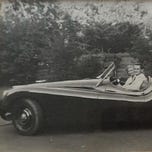


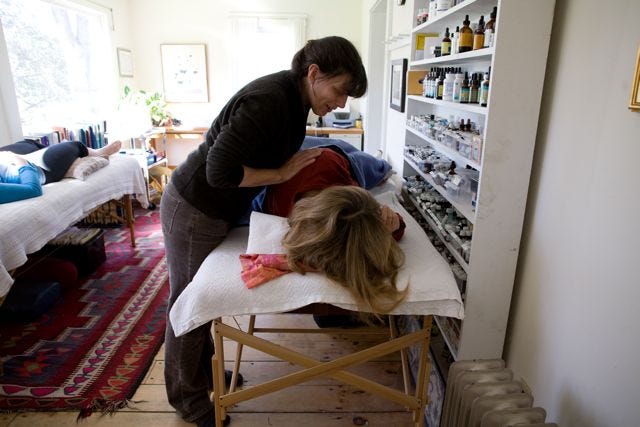


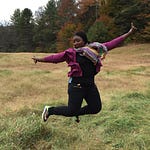

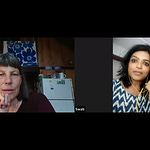

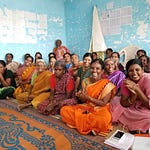
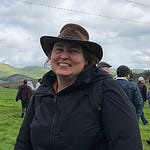
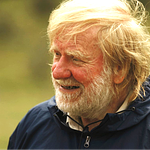
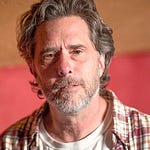
The Ecology of Care, Chapter 1: The Lobotomy of Care (part one)